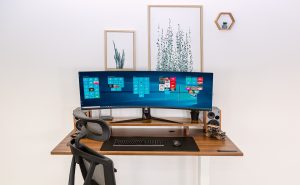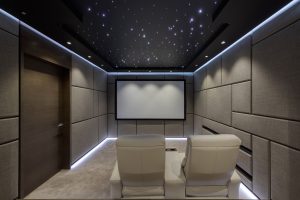Calibration is the process of adjusting your monitor to produce accurate and consistent colors. It is an important step for anyone who works with digital media, from photographers and graphic designers to video editors and gamers.
Without proper calibration, the colors on your screen may not match those in real life, which can lead to poor color reproduction in your work. This can be particularly problematic if you are working on a project that will be printed or displayed on another screen, as the colors may appear different than you intended.
Therefore, calibrating your monitor is essential to ensure that your work is color-accurate and of high quality. In this article, we will walk you through the steps to calibrate your monitor for precise color accuracy using software-based or hardware-based tools.
Check Your Monitor’s Built-In Settings
Most modern monitors come with built-in settings that allow you to adjust color temperature, brightness, and contrast. Make sure your monitor is set to its default settings before starting the calibration process. You can access these settings via the on-screen display (OSD) menu.
Choose the Right Calibration Tool
Several tools are available for calibrating your monitor, ranging from free software to professional hardware solutions. The most common options are software-based tools, which use your computer’s graphics card to adjust the monitor’s settings. Some popular software options include Calibrize, QuickGamma, and DisplayCAL. Consider investing in a hardware calibration tool such as the X-Rite i1Display Pro if you require more precise calibration.
Adjust the Monitor’s Color Temperature
Color temperature refers to the relative warmth or coolness of the colors on your screen. Most monitors have a default color temperature of 6500K, which is considered the standard for daylight viewing. However, you may prefer a cooler or warmer temperature, depending on your personal preferences. Use your calibration tool to adjust the color temperature until it matches your desired setting.
Adjust the Monitor’s Brightness and Contrast
Brightness and contrast settings affect the overall luminance of your screen. Adjust the brightness until the blacks on your screen are dark enough but not too dark that you lose shadow detail. Contrast settings control the difference between the lightest and darkest areas of your screen. Adjust the contrast until you can see all the details in your images without losing any highlights.
Verify Your Calibration With a Test Image
Once you have adjusted all the settings, verifying your calibration with a test image is essential. A test image is a standardized image that can show you if your monitor is displaying colors accurately. You can download test images online or use a built-in tool like Windows’ Display Color Calibration. Make sure the colors in the test image match the real-life colors as closely as possible.
Repeat the Calibration Process Periodically
Monitor calibration is not a one-time process. Over time, your monitor’s color accuracy may shift due to changes in lighting conditions or wear and tear on the hardware. Repeat the calibration process periodically, at least once a month, to ensure your monitor always displays accurate colors.
Final Thoughts
Calibrating your monitor is a crucial step in ensuring that your work is color-accurate, whether you’re a graphic designer or a photographer. By following these steps and using the right tools, you can achieve precise color accuracy on your monitor and produce high-quality work.
For a computer products guide, check out TechnoQia, a blog business that focuses on electronics and is monetized through Amazon affiliate marketing. Contact us.





